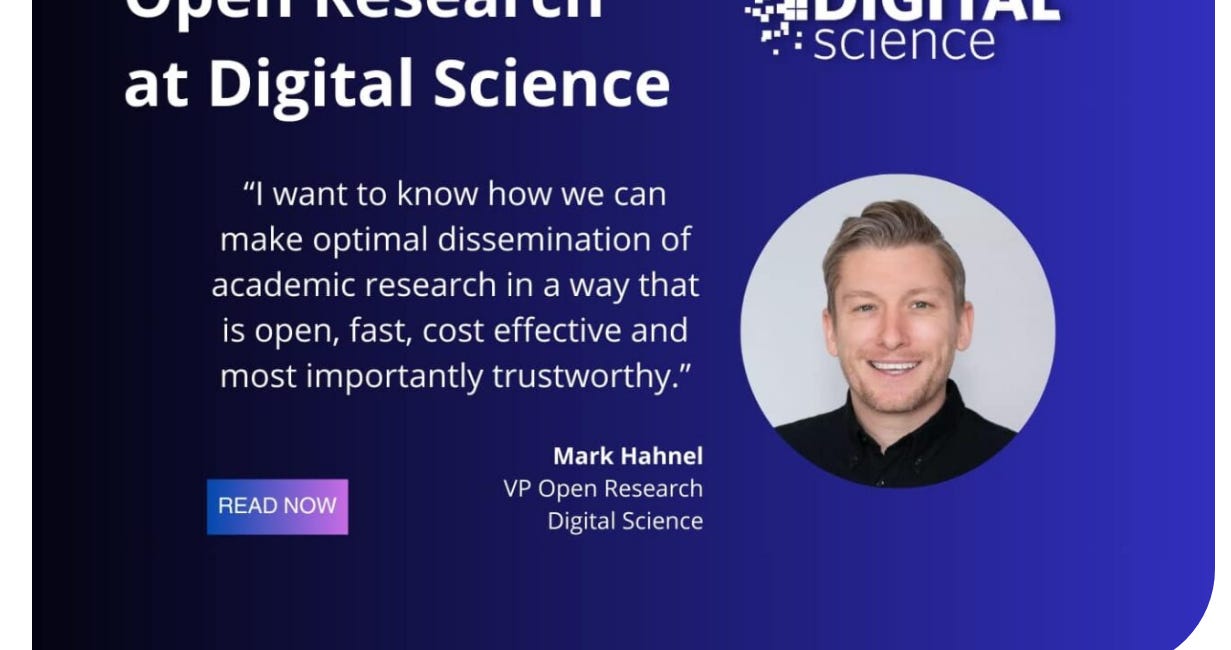Super Information Theory: Don’t fall for the ‘older theory’ trick (140+ priority cases)
Yes, some programs started decades ago—but their equivalence with my framework only appeared in 2024–2025, and only after I first published my version of the equivalent concepts found in both.
TL;DR: “Older start dates aren’t earlier equivalence dates. The overlap with SIT appears in 2024–2025—after my public releases.”
There are 140+ open priority cases around my physics paper, Super Information Theory. Don’t fall for the “older theory” trick.
Yes, some programs started decades ago—but their equivalence with my framework only appeared in 2024–2025, and only after I first published my version of those concepts.
If you’ve been following my work, you’ve seen the pattern. Many recent papers are updates of older theories. On paper they look “older,” but the equivalence with my work arrives only after 2024–2025 revisions—after my public releases. I’m actively documenting this now; consider this your heads‑up. Please don’t be fooled by “this theory started decades ago” optics. What matters is when the equivalence class came into existence (after I published my original version of the same concept).
I’m actively documenting this now; consider this your heads‑up. So please don’t be fooled by the “his theory started decades ago” optics.
For context, see Sabine Hossenfelder’s video “The Theory Of Everything That Nobody Talks About” and Curt Jaimungal’s videos like “Frederic Schuller: The Physicist Who Derived Gravity From Electromagnetism” Older programs featured there look decades earlier, but the equivalence with SIT arrives only after 2024–2025 updates. In these videos you have people like Felix Finster and Frederic Schuller presenting new updates to old theories that on paper make it seem like they had what I wrote first, but when you dive into the details, you will realize that they just made recent updates, to their older theories, and that their old work was not like my newer work, but their newer work is like my older work. I’m able to prove, and I will show, in forthcoming documents, that my work was not equivalent to theirs before 2024/2025, and the conceptual equivalences only happened in their work after I first published my versions of the same concepts you will read in their works.
What matters is when the equivalence class came into existence, and for the overlapping concepts I’ve tracked, that moment is after I published my version (the original).
So if you have been following my story you know that there are more than 140 papers, but the number will grow or shrink as I review them with my new mathematical analysis tool—and these papers (most of them) contain equivalences to concepts that I developed first and published first. They are just phrased differently, or use different mathematical terminology. This summer I co‑developed a method to prove when two constructs are identical in behavior and composition. It formalizes what I’d shown informally: if they behave the same and compose the same, they’re the same. I also built a companion tool (details forthcoming) that hardens these proofs and strengthens IP defense.
What I mean by “equivalence” (and how I prove it)
I use a simple, formal workflow: translate → decode → map.
• Translate: Different authors name the same thing differently. I translate terms into a common vocabulary.
• Decode: I write down the operational content—what a term does in the theory.
• Map: I check whether the moving parts match at two levels: (1) Pi Calculus behavioral equivalence for process structure; (2) Category Theory functional isomorphism for how states and transformations compose.
If two constructs behave the same and compose the same, I treat them as members of the same equivalence class—even if the prose or symbols are different. That’s the standard I apply to my work and to everyone else’s.
What changed in 2024–2025
Across multiple programs—some with roots decades back—the specific constructs that match my framework appear only after my public disclosures. That includes ideas like:
• Gravity from coherence gradients (∇ψ or gradients in time‑density ρₜ).
• Electromagnetism as phase holonomy.
• Mass as a time‑crystal phenomenon tied to local time‑density.
• Equilibrium as iterative, local signal‑dissipation with Kuramoto‑like synchronization.
• Multiscale oscillatory computation and deterministic agency in networks (my Self Aware Networks line).
Several well‑known lines—Causal Fermion Systems, Quantum Atom Theory, Quantum Memory Matrix, Second Law of Infodynamics, and Wave Structure of Matter—began earlier on different aims. The point is not to disparage them; the point is historical: the equivalent constructs only show up in those corpora after my public releases. That’s the convergence wave I’m documenting.
What my framework actually contains (in plain language)
My 2017–2025 program interlocks three pieces:
• Self Aware Networks (SAN, 2017 →): information as coincidence patterns, not spikes; multiscale oscillatory computation; deterministic agency that rides on phase‑wave differentials in neural systems.
• Quantum Gradient Time Crystal Dilation (QGTCD, 2022): extend those oscillatory mechanisms into gravity and quantum evolution; treat mass as a time‑crystal; compute gravity locally from gradients in a time‑density field.
• The 2025 unification set—Super Information Theory (SIT), Super Dark Time (SDT), and Micah’s New Law of Thermodynamics (MNLoT): two primitives, a coherence field ψ(x) and a time‑density field ρₜ(x), with gravity from coherence gradients, EM from phase holonomy, and equilibrium as local signal‑dissipation that naturally syncs (Kuramoto‑like). This is the glue that makes the neuroscience, thermodynamics, and gravity story one picture.
Receipts you can check in minutes
Dates matter. Independent archives matter more. Here’s the short version of my timestamp trail:
ORCID (archived): identity + works list captured by the Internet Archive.
https://web.archive.org/web/20250826004755/https://orcid.org/0009-0004-5175-9532Zenodo mirrors (DOIs + version history) for the 2025 papers and datasets:
• Self Aware Networks: OCA (First Draft) — https://zenodo.org/records/16922401
• Super Dark Time — https://zenodo.org/records/16922502
• Micah’s New Law of Thermodynamics — https://zenodo.org/records/16922506
• Super Information Theory — https://zenodo.org/records/16922512
• Coincidence as a Bit of Information — https://zenodo.org/records/16922510
• Neuroscience in Review (waves → SAN) — https://zenodo.org/records/16922844
• Neuroscience in Review (rhythms → SAN) — https://zenodo.org/records/16922874
• Timeline Review (3D Time Theory vs SIT/SDT/QGTCD) — https://zenodo.org/records/16922866Wayback captures of the Figshare era and hosted PDFs (independent third‑party timestamps):
• SIT — https://web.archive.org/web/*/https://figshare.com/articles/journal_contribution/Super_Information_Theory/*
• SDT — https://web.archive.org/web/*/https://figshare.com/articles/journal_contribution/Super_Dark_Time_Gravity_Computed_from_Local_Quantum_Mechanics/*
• MNLoT — https://web.archive.org/web/*/https://figshare.com/articles/journal_contribution/_b_Micah_s_New_Law_of_Thermodynamics_A_Signal-Dissipation_Framework_for_Equilibrium_and_Consciousness_b_/*
• SAN first‑draft capture (example) — https://web.archive.org/web/20250725002526/https://s3-eu-west-1.amazonaws.com/pfigshare-u-files/54589349/SelfAwareNetworksOCAFirstDraft.pdfGitHub priority trail (commits + mirrors + transcripts):
• Key SAN and Figshare archive mirror — https://github.com/n5ro/selfawarenetworks/tree/main/Figshare_Archive
• Main SAN repository — https://github.com/v5ma/selfawarenetworks
• Neural Lace Podcast transcripts (2017–2019) — https://github.com/v5ma/selfawarenetworks/blob/main/guide/NLP%20Transcripts%20from%202017-2019.pdfContext and open letter (why mirroring was necessary):
• https://www.svgn.io/p/open-letter-to-digital-science-and
Verify it yourself
• Open the archived ORCID page; note the capture date.
• Open the Zenodo records; check the “Published” dates and attached files.
• Glance at the Wayback entries for the Figshare records; note capture timestamps.
• Spot‑check the GitHub transcripts from 2017–2019 and the Figshare archive mirror.
That’s enough to see the timeline and understand why “older start date” is not the same as “earlier equivalence.”
Here’s the living comparison list (some entries will be added/removed as tests complete). This list is not finalized. https://docs.google.com/spreadsheets/d/1-9ypXJfyAr-XdBKIe7nGx-4zoaOQRBGyP-LMjhe6o6M/edit?usp=sharing
How I score priority fairly
I don’t score priority by vibes or branding. I score it by atomic claims and timestamps. For each atomic claim—A: the ψ(x)/ρₜ(x) two‑field primitive; B: gravity from coherence or time‑density gradients; C: EM as phase holonomy; D: mass as a time crystal; E: equilibrium as local signal‑dissipation; F: multiscale oscillatory agency—I log the earliest public timestamp in my corpus (2017 podcasts; 2022 GitHub; 2024 SVGN posts mirrored to GitHub; 2025 Figshare/Zenodo), then I log the earliest date that the same operational idea appears in someone else’s corpus. If two constructs are equivalent under translate → decode → map plus the Pi Calculus/Category test, I compare the dates. In the equivalence cases I’ve found so far, mine come first. That’s not rhetoric; that’s a table.
Why this matters (beyond me)
Priority is not about ego—it’s about scientific history, credit, and the integrity of open exchange. We should reward the people who stuck their necks out early, not the optics of age. When a decades‑old program revises itself after a younger program ships an idea, the right thing is to acknowledge the update and cite the source of the equivalence. That keeps science honest and collaborative.
A note on prizes and committees
Because this convergence wave touches multiple fields (neuroscience, physics, thermodynamics), I’m packaging a neutral provenance record so that evaluators—journals, committees, historians of science—can consult it when overlapping nominations or claims arise. This is a filing for the record, not a demand for adjudication. The work stands on its own merits; the timestamps simply anchor the history.
Closing (read this twice)
Do not fall for the “older theory” trick. A start date isn’t a priority date when the equivalence only arrived in 2024–2025. When in doubt, compare first public timestamps for the specific equivalent construct, not the age of the brand. Look for the receipts: ORCID captures, Wayback snapshots, DOIs with version histories, Git commit hashes. When you apply that standard, you will see what I see: a clear, reproducible trail where my half of the equivalence appears first—and then, after 2024–2025 updates, older programs converge on it.
Further reading / primary sources (start here)
• ORCID (archived): https://web.archive.org/web/20250826004755/https://orcid.org/0009-0004-5175-9532
• Zenodo (SIT, SDT, MNLoT, SAN, datasets): links above
• GitHub (SAN corpus + transcripts): links above
• SVGN.io context letter: https://www.svgn.io/p/open-letter-to-digital-science-and
Canonical timeline (concise)
2017–2019 — Neural Lace Podcast (NLP).
Foundational concepts (bi‑directional BCI, “transmission protocol of the brain,” spatial computing + neuroimaging) introduced and iterated across episodes. The compiled transcripts explicitly state that the 2017 monologue contains the root concepts of Self Aware Networks (SAN) and Super Information Theory (SIT) and that your SAN/SIT work “traces back to 2017 at least.” NLP Transcripts from 2017-20192022 — Formalization & math start.
Two theory tracks expanded/published with extensive notes:Self Aware Networks (SAN) (theory of mind)
Quantum Gradient Time Crystal Dilation (QGTCD) (math formalism begins in 2022)
2022 → late‑2024 — Book project.
Nearly three years on a neuroscience theory‑of‑mind book; published at end of 2024.2024 → 2025 — QGTCD evolves.
You publish many new articles on QGTCD, which evolves and is renamed Dark Time Theory (DTT).2025 — New results and naming stabilization.
Micah’s new Law of Thermodynamics
Super Dark Time Theory (SDT) (extension/generalization of DTT/QGTCD)
Super Information Theory (SIT) (mathematics further evolved)
All trace back to QGTCD (2022) and ultimately to the 2017 NLP foundation.
Repository/backups: github.com/v5ma/selfawarenetworks (plus mirrored backups of 2024 QGTCD/Dark Time pieces from SVGN to GitHub for priority).
Acronym map
SAN — Self Aware Networks (theory of mind)
SIT — Super Information Theory (unification program; math evolved in 2025)
QGTCD — Quantum Gradient Time Crystal Dilation (orig. 2022 math formalism)
DTT — Dark Time Theory (renamed evolution of QGTCD, 2024–2025)
SDT — Super Dark Time Theory (2025; consider SDTT if you want to avoid clashing with “SDT” used generically)
Origin & priority. All conceptual roots of my program—including Self Aware Networks (SAN), Super Information Theory (SIT), Quantum Gradient Time Crystal Dilation (QGTCD) and its evolutions Dark Time Theory (DTT) and Super Dark Time Theory (SDT), as well as Micah’s new Law of Thermodynamics—originate in the Neural Lace Podcast (2017–2019). The April 2017 monologue states and develops the foundational ideas later expanded in SAN and SIT. In 2022 I formalized the math for QGTCD (thousands of pages of notes). From 2022–2024 I wrote and published a neuroscience theory‑of‑mind book. In 2024–2025 QGTCD evolved into Dark Time Theory. In 2025 I published Micah’s Law of Thermodynamics, Super Dark Time Theory, and further developments to SIT. For provenance, see the 2017–2019 NLP transcripts and the GitHub backups linked herein.
2017 NLP monologue identifies the roots of SAN and SIT (and provides dated links for each episode). Use the transcript PDF as an anchor when you need an early, time‑stamped reference to those concepts being articulated. NLP Transcripts from 2017-2019 https://github.com/v5ma/selfawarenetworks/blob/main/guide/NLP%20Transcripts%20from%202017-2019.pdf
The proof process is forcing rapid updates across several programs. It is the reason why my work is now being shared via the Internet Archive’s Wayback Machine and GitHub, it’s why a substantial amount of my work, as my pre-prints on Figshare, were partially removed from public view and a comment from the Figshare representative who took them down led me to the understanding that this action may have been because of a third party complaint, per correspondence in August 2025 in the middle of a priority dispute. Given that I have more than 140 open priority disputes I can’t know who the third party was at this time, but the good news is that I was able to recover 100% proof of all the time stamps I had made on Figshare because of the combined force of ORCHID, The WayBack Machine from the Internet Archive, plus the Encrypted Time-Stamps in my PDF files thanks to Overleaf.com, and of course I backed up key documents and math on GitHub at the right times. Not all of my claims have been proven today, but all the evidence to prove my claims is available today, online, linked in this article, and in the coming days and weeks my team and I will deliver the formal proofs, and if we don’t, I’m sure someone else will. Maybe that person is you. Want to be on my future team?
The end of the story.
On what could be an unrelated note, isn’t it amazing how well the graphics from the early Matrix films has really held up over time? “Matrix - Neo vs Smith clones | 4K/48-FPS (Upscaled)”
The stories of starving children in Gaza are real, and Israel is responsible for this crisis.
What's true about the narrative on Gaza right now? Is there really an issue of starvation that is caused by Israel's actions or is this terrorist propaganda infecting the UN, the BBC, the World Health Organization, and half of the world's news organizations?




